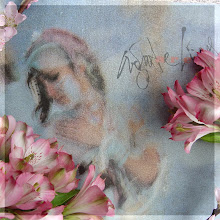 Alsobia punctata (type)
Alsobia punctata (type)Alsobia Hanst. 1854, from Greek alsos, bosk, groove, forest, and bios, life, biein, live; alluding to the ( epiphytic ) life in the forest.
The type species of Alsobia: Alsobia punctata (Lindl.) Hanst.
◆


 Episcia lilacina, Episcia cupreata
Episcia lilacina, Episcia cupreataEpiscia Mart. 1829, from Greek epi, on, upon, and skia, shadow; in reference to the shady habitat of the plants.
The type species of Episcia: Episcia reptans Mart.
◆
 Chrysothemis pulchella (type)
Chrysothemis pulchella (type)Chrysothemis Decne. 1849, either derived from Greek chrysous, golden, gold-colored, and themis, law, rule, or anthē, anthēmon, flower; alluding to the bright yellow or orange flower color, or ( probably ) named after Chrysothemis of Greek mythology.
The type species of Chrysothemis: Chrysothemis pulchella (Donn ex Sims.) Decne.
◆




Nautilocalyx bicolor, Nautilocalyx bullatus, Nautilocalyx pictus, Nautilocalyx villosus,
Nautilocalyx bracteatus (type),
Nautilocalyx aeneus
Nautilocalyx Linden ex Hanst. 1854, composed of Latin Nautilus, a sailor or a marine mollusc with peculiar shell, and Latin calyx, calyx.
It is not clear what the name alludes to.
The type species of Nautilocalyx: Nautilocalyx bracteatus (Planch.) Sprague syn. Nautilocalyx hastatus Linden ex Hanst. (nom. illeg.)
◆

Drymonia turrialvae, Drymonia cristata
Drymonia Mart. 1829, from Greek drymos, oak, wood; in allusion to the plant growing on trees in woods.
The type species of Drymonia: Drymonia calcarata Mart. syn. Drymonia serrulata (Jacq.) Mart.
◆
 Paradrymonia ciliosa (type), Paradrymonia maculata
Paradrymonia ciliosa (type), Paradrymonia maculataParadrymonia Hanst. 1854, from Greek para, beside, alongside, close by, near, and the generic name Drymonia.
The type species of Paradrymonia: Paradrymonia glabra (Benth.) Hanst. syn. Paradrymonia ciliosa (Mart.) Wiehler
.



沒有留言:
張貼留言